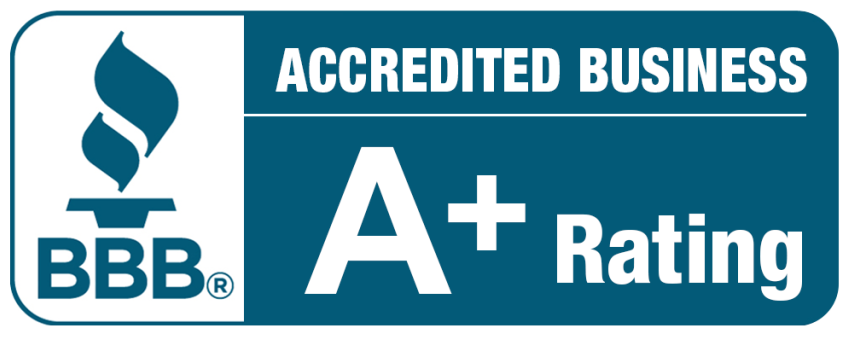If you are looking for a way to improve your home’s comfort and energy efficiency, you might be wondering whether to choose a ductless mini-split system or a traditional HVAC system. Both options have their pros and cons, and the best one for you depends on several factors.
In this blog post, we will compare the main features and benefits of ductless mini-splits and traditional HVAC systems, but ultimately, the choice of which is the lesser evil falls to you. We will simply give you information to help you decide. Let’s jump into it, shall we?
Pros and Cons of Ductless Mini-Splits
Ductless mini-split systems have revolutionized the realm of heating and cooling with their unique features and capabilities. However, they come with their own set of pros and cons.
Pros
1. Energy efficiency
Unlike traditional HVAC systems that lose substantial energy through ductwork, mini-splits bypass this issue by delivering conditioned air directly to specific zones. Moreover, many models boast variable-speed compressors, enabling them to adjust their output according to each zone’s heating or cooling requirements.
2. Zoning capabilities
With each indoor unit independently controlled, you have the freedom to adjust the temperature and airflow in different rooms. This can improve comfort and reduce energy waste by avoiding heating or cooling areas that are not in use.
3. Installation flexibility
Consisting of a compact outdoor unit and one or more indoor units, they can be effortlessly mounted on walls, ceilings, or floors. The absence of extensive ductwork makes them an excellent choice for older homes, room additions, or areas where duct installation is impractical or expensive.
4. Improved indoor air quality
Traditional HVAC systems often suffer from the issue of ducts accumulating dust, allergens, and other contaminants that are then distributed throughout the house. Ductless mini-splits tackle this problem head-on as they do not rely on ductwork. In fact, they typically feature multi-stage filtration systems designed to capture and eliminate airborne particles.
Cons
1. Higher upfront costs
This upfront cost includes the outdoor unit, indoor units, and the expenses associated with their installation. However, it’s crucial to consider the long-term energy savings and potential rebates or incentives that can offset these initial expenses.
2. Limited cooling or heating capacity per unit
Each indoor unit of a ductless mini-split system possesses a finite cooling or heating capacity. Consequently, larger spaces or open floor plans may require multiple indoor units to effectively cool or heat the area.
3. Aesthetics
While ductless mini-split systems offer installation flexibility, some individuals may have reservations about the appearance of indoor units on walls or ceilings. However, manufacturers have made significant efforts to design sleek and stylish indoor units that seamlessly blend with various interior décors, minimizing any aesthetic concerns.
4. Regular maintenance
This entails tasks such as filter cleaning or replacement, coil inspection, and cleaning, and overall system checks. Although the maintenance requirements are not overly demanding, consider them as part of the ongoing care for your system.
Pros and Cons of Traditional HVAC Systems
Traditional HVAC systems have stood the test of time, offering effective heating and cooling solutions for residential and commercial spaces (that’s why they’re traditional). However, like any technology, they come attached with their own set of pros and cons.
Pros
1. Widely available and trusted
Traditional HVAC systems have been around for years and are widely available. HVAC professionals are well-versed in their installation, maintenance, and repair. This availability ensures that you can easily find qualified technicians to handle your system’s needs.
2. Whole-home comfort
By utilizing a network of ducts, traditional HVAC systems distribute conditioned air evenly throughout various rooms and spaces. This ensures consistent temperature control and is particularly advantageous for larger properties or residences where uniform climate control is desired.
3. Evolved energy efficiency
Many HVAC models now adhere to recognized efficiency ratings, such as SEER (Seasonal Energy Efficiency Ratio) for air conditioners and AFUE (Annual Fuel Utilization Efficiency) for furnaces. This allows you to select a system that aligns with your energy-saving goals and reduce utility costs.
4. They’re cost-effective for larger spaces
Once installed, the centralized nature of these systems makes them efficient in heating or cooling expansive areas. If you have a sizable home or commercial building, an HVAC system can effectively maintain a comfortable climate without the need for multiple units.
Cons
1. Energy loss through ductwork
Over time, ducts can develop leaks or insufficient insulation, resulting in wasted energy and reduced efficiency. Regular inspection and maintenance of ducts are necessary to minimize these energy losses and keep the system operating efficiently.
2. Limited zoning and temperature control
Most systems rely on a central thermostat that governs the temperature for the entire space. While some provide zoning capabilities with multiple thermostats, they may not offer the same level of customization as ductless mini-split systems, limiting individual control in specific areas.
3. Higher operating costs
Energy losses through ductwork and the need to heat or cool the entire space, even in unoccupied areas, can contribute to increased utility bills. Regular maintenance, filter replacements, and system inefficiencies can further drive up operating costs over time.
4. Installation challenges
Installing traditional HVAC systems can be complex and time-consuming, especially in existing structures without pre-installed ductwork. The process often involves duct installation, ventilation setup, and positioning of the outdoor unit. These challenges require professional expertise and drive up costs.
5. Potential indoor air quality concerns
If the ducts are not properly maintained, they can become breeding grounds for dust, allergens, and other contaminants. This can compromise indoor air quality, particularly for individuals with respiratory conditions or allergies.
Factors to Consider When Making a Choice
Whatever your choice is, you’ll have to live with it. So your choice has to be one that covers all your needs and preferences. To make an informed choice, here are several crucial factors to consider.
1. Home Size and Layout
Ductless mini-splits
These’re ideal for smaller to medium-sized homes or specific zones within larger homes. Multiple units may be needed for larger homes to ensure efficient temperature control throughout.
Traditional HVAC systems
Designed for larger spaces, they’re capable of effectively heating or cooling the entire home with the help of ductwork, ensuring consistent temperature control across multiple rooms.
2. Energy Efficiency Goals
Ductless mini-splits
Highly energy-efficient due to the elimination of ductwork and zoned heating and cooling. This targeted approach reduces energy waste, resulting in potential cost savings.
Traditional HVAC systems
While efficient, energy loss can occur through ductwork. Proper sealing and insulation can minimize this loss, but if energy efficiency is a priority, ductless mini-splits are the more energy-efficient option.
3. Cost Considerations
Ductless mini-splits
Higher upfront costs, including outdoor and indoor units, and installation expenses. However, long-term savings can be achieved through energy efficiency and potential rebates or incentives.
Traditional HVAC systems
Lower upfront costs due to established infrastructure, but long-term operating costs, including energy consumption and maintenance or repairs, should be considered.
4. Zoning and Individual Temperature Control Needs
Ductless mini-splits
They excel in providing zoned heating and cooling, allowing for individual temperature settings in different rooms or zones.
Traditional HVAC systems
Typically offer centralized temperature control, with the thermostat governing the temperature for the entire home. While some systems provide zone control, it may lack the sheer flexibility of ductless mini-splits.
5. Existing Ductwork and Infrastructure
Ductless mini-splits
Suitable for homes without existing ductwork or where duct installation is impractical or costly. The flexible installation process makes them a great fit for older homes or room additions.
Traditional HVAC systems
If your home already has a functional ductwork system, traditional HVAC systems can be convenient. Leveraging the existing infrastructure simplifies installation and reduces costs.
After You’ve Made a Choice…
When you decide which system to use, next comes the choice of which model to get. But that’s a process professionals like us, Morehart Air Conditioning and Heating, can help you with, as well as the installation after you decide.
That’s not all we can do! Whether you need installation, repair, or maintenance of your heating and cooling systems, we have the expertise and experience to handle any job. Contact us today from anywhere in Arizona and get a free estimate on our services. We guarantee your satisfaction and comfort.




